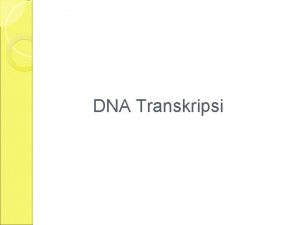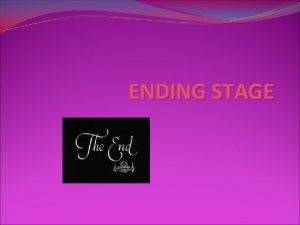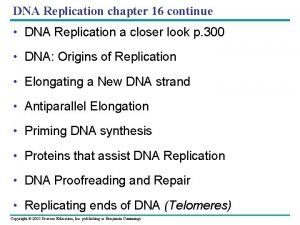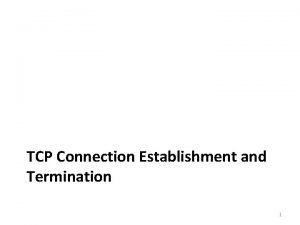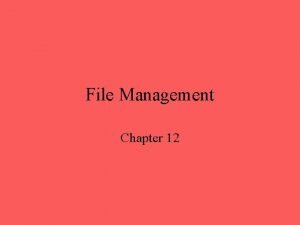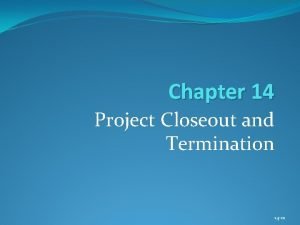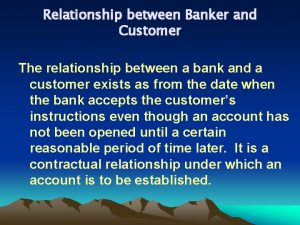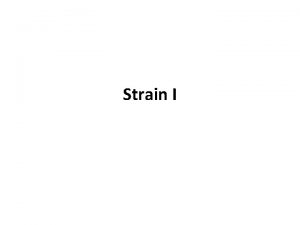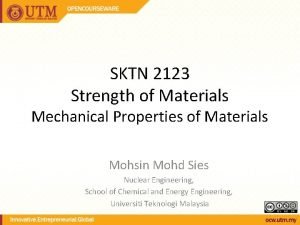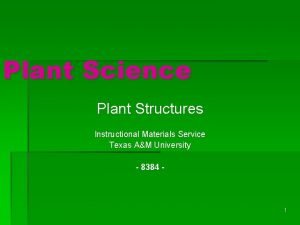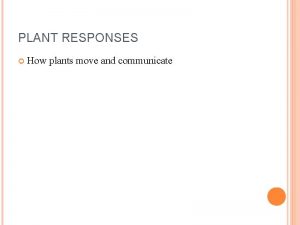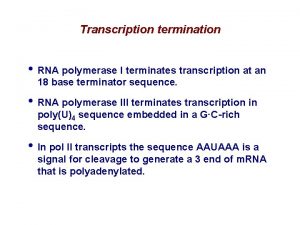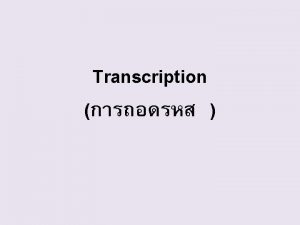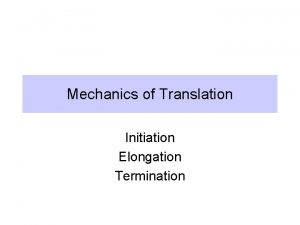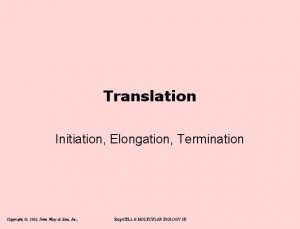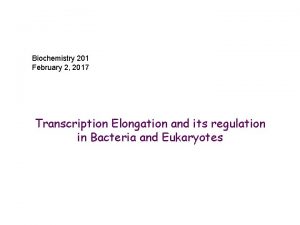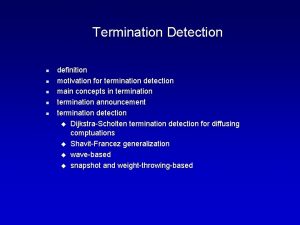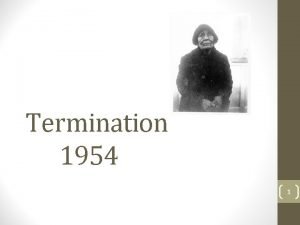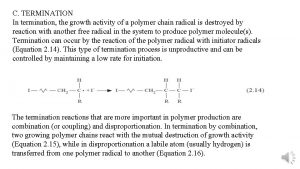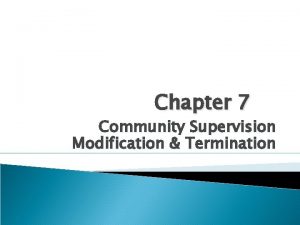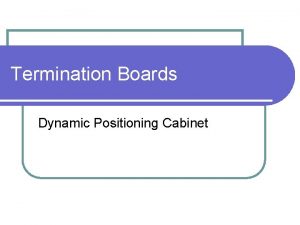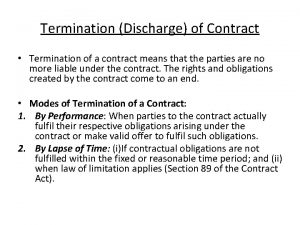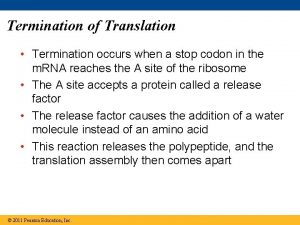Elongation and Termination of Transcription Elongation phase of























- Slides: 23

Elongation and Termination of Transcription

Elongation phase of transcription • Requires the release of RNA polymerase from the initiation complex • Highly processive • Dissociation of factors needed specifically at initiation. – Bacterial s dissociates from the holoenzyme – Eukaryotic TFIID and TFIIA appear to stay behind at the promoter after polymerase and other factors leave the initiation complex

Proteins implicated in elongation • P-TEFb – Positive transcription elongation factor b – Cyclin-dependent kinase – Phosphorylates CTD of large subunit, Pol II • E. coli Gre. A and Gre. B, eukaryotic TFIIS – may overcome pausing by the polymerase – induce cleavage of the new transcript, followed by release of the 3’ terminal RNA fragment. • E. coli Nus. G, yeast Spt 5, human DSIF – Regulated elongation (negative and positive), direct contact with polymerase and nascent transcript • ELL: increase elongation rate of RNA Pol II • CSB: Cockayne syndrome B protein, incr. elongation rate

Model for RNA Polymerase II Phosphorylation CTD has repeat of (YSPTSPT)26 -50 Model: Phosphorylation of Pol IIa to make Pol IIo is needed to release the polymerase from the initiation complex and allow it to start elongation.

The shift from initiation to elongation can be a regulated event. • Release from pausing can be the mechanism for induction of expression. – In Drosophila, the RNA polymerase can pause after synthesizing ~ 25 nucleotides of RNA in many genes. – under elevated temperature conditions, the heat shock factor stimulates elongation by release from pausing. – Other possible examples: mammalian c-myc, HIV LTR • This is in addition to regulation at initiation.

Phosphorylated form of RNA Pol. II is at sites of elongation after heat shock

Regulation of HIV transcription at elongation • The human immunodeficiency virus, HIV, is the presumptive cause of AIDS. • It has an enhancer and a promoter in its long terminal repeat, or LTR. • RNA polymerase II pauses at about +70 (within the LTR). • The virally encoded protein Tat is needed to allow elongation past +70. • Tat binds to an RNA structure centered at about +60, called tar.

Mechanism of regulation at elongation for HIV: TFIIH • Elongation requires the CTD of RNA Pol II • Tat leads to phosphorylation of RNA Pol II CTD • The kinase in the CDK 7 subunit of TFIIH can be used to phosphorylate the CTD of RNA Pol II • An inhibitor of CDK 7 will block Tatdependent elongation by RNA Pol II

Mechanism of regulation at elongation for HIV: P-TEFb • Further phosphorylation of CTD of RNA Pol II is catalyzed by the elongation factor P-TEFb, a cellular enzyme. • The kinase subunit of P-TEFb is CDK 9. • P-TEFb is needed for elongation past tar in an in vitro assay. • >100, 000 compounds were screened for the ability to block Tat-stimulated transcription of HIV, and all the positive compounds were found to inhibit PTEFb.

An in vitro transcription elongation assay shows that both P-TEFb and Tat are needed for elongation Paused product = 70 nts Elongated product = 700 nts Removal of P-TEFb prevents elongation

HIV regulation via elongation : Summary • Tat-dependent activation works through both kinases to phosphorylate the Pol II CTD. – TFIIH - perhaps for promoter clearance – P-TEFb - for full elongation • HIV LTR is also regulated at initiation by a large number of transcription factors that bind upstream of the core promoter, all within the LTR.

Elongation factor-dependent realignment of the 3’ RNA end

Termination of transcription

Termination of transcription in E. coli: Rho-independent site

Termination of transcription in E. coli: Rho-dependent site • Little sequence specificity: rich in C, poor in G. • Requires action of rho (r ) in vitro and in vivo. • Many (most? ) genes in E. coli have rho-dependent terminators.

Rho factor, or r • • Rho is a hexamer, subunit size is 46 k. Da Is an RNA-dependent ATPase Is an essential gene in E. coli Rho binds to protein-free RNA and moves along it (tracks) • Upon reaching a paused RNA polymerase, it causes the polymerase to dissociate and unwinds the RNA-DNA duplex, using ATP hydrolysis. This terminates transcription.

Model for action of rho factor

m. RNA Structure in Bacteria : Coupling Transcription Termination and Translation lac. Y lac. Z lac. A Genes in operon transcription AUG UAA translation b-galactosidase lactose permease Polycistronic m. RNA b-galactoside transacetylase

Translation can occur simultaneously with transcription in bacteria lac. Y lac. Z UAA Transcription of genes AUG Nascent polypeptide lac. A ribosome b-galactosidase Translation of m. RNA

Polarity • Polar mutations occur in a gene early in an operon, but affect expression of both that gene and genes that follow in the operon. • Usually affect translation at the beginning of an operon, and exert a negative effect on the transcription of genes later in the operon. – Usually are nonsense (translation termination) mutations in a 5’ gene that cause termination of transcription of subsequent genes in the operon. • Rho mutants can suppress polarity.

Diagram of polar effects

Model for involvement of rho in polar effects of nonsense mutations nonsense

Eukaryotic m. RNA structure
 Termination of transcription in prokaryotes
Termination of transcription in prokaryotes Ending stage of group work
Ending stage of group work Mobile phase and stationary phase
Mobile phase and stationary phase Chromatography mobile phase and stationary phase
Chromatography mobile phase and stationary phase Which detector used in hplc
Which detector used in hplc Double exposure artifact
Double exposure artifact The replication bubble and antiparallel elongation
The replication bubble and antiparallel elongation Normal phase vs reverse phase chromatography
Normal phase vs reverse phase chromatography Hplc reverse phase vs normal phase
Hplc reverse phase vs normal phase Normal phase vs reverse phase chromatography
Normal phase vs reverse phase chromatography Line current and phase current
Line current and phase current Phase to phase voltage
Phase to phase voltage Csce 441
Csce 441 Tcp connection diagram
Tcp connection diagram In file organization a fixed format is used for records
In file organization a fixed format is used for records Elements of project closeout management
Elements of project closeout management Termination of banker customer relationship
Termination of banker customer relationship Quadratic elongation formula
Quadratic elongation formula Ductility in percent elongation
Ductility in percent elongation Zone of elongation
Zone of elongation Gravitropism auxin
Gravitropism auxin Functions of gibberellins
Functions of gibberellins Engineering stress
Engineering stress Elongation of rebar
Elongation of rebar
